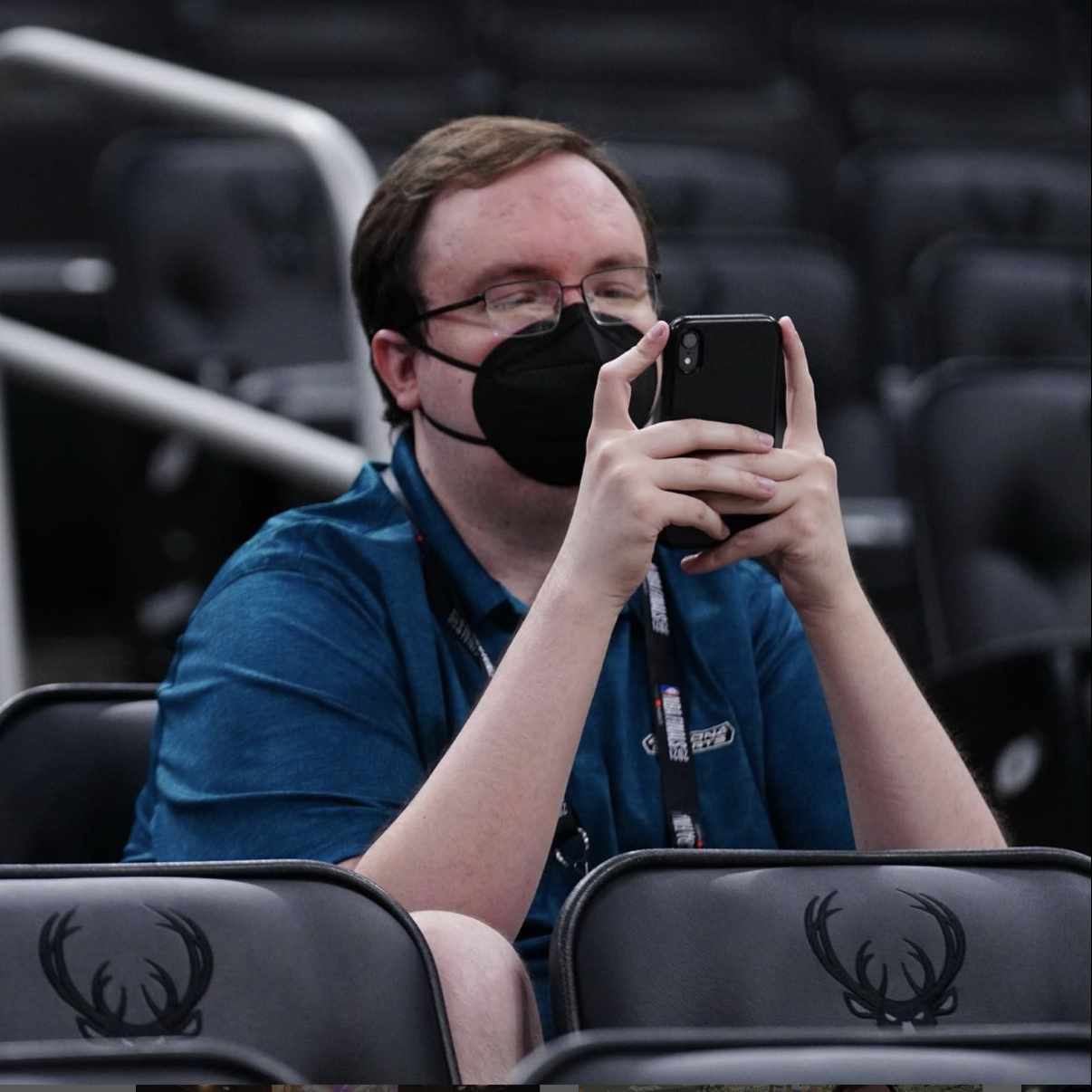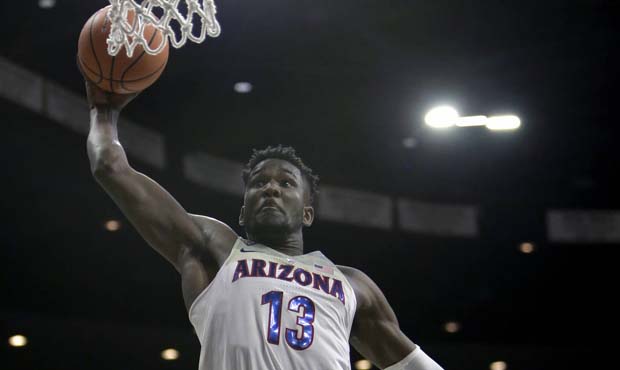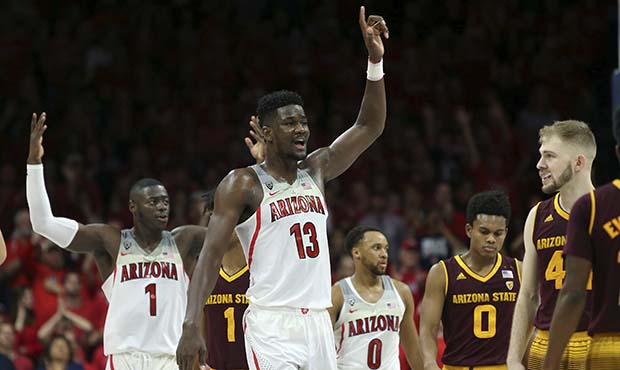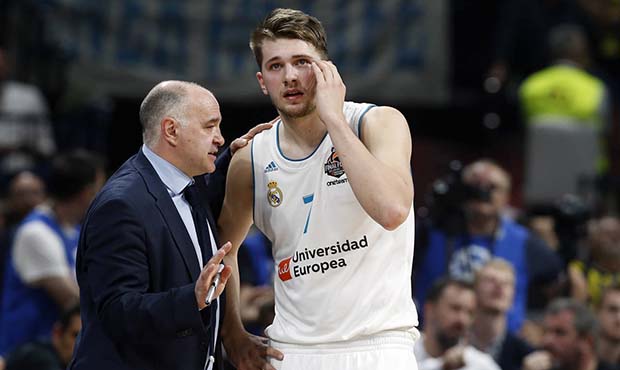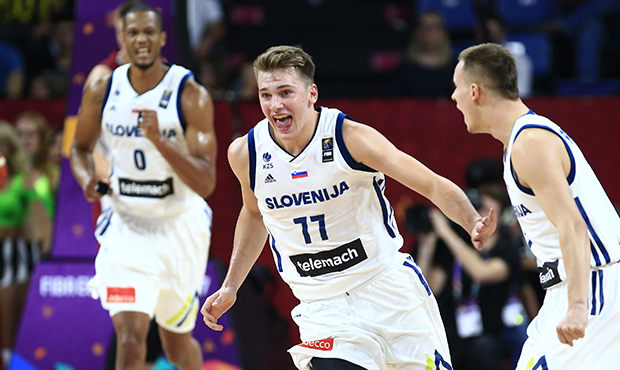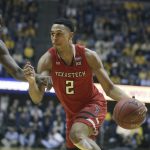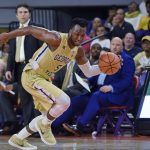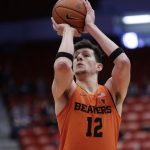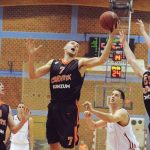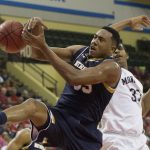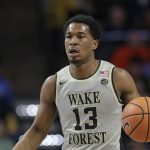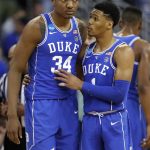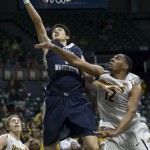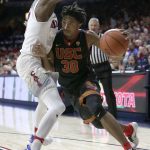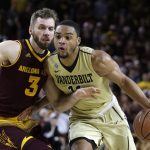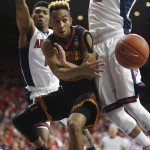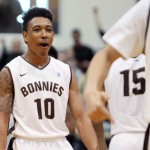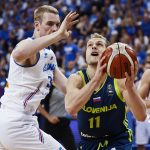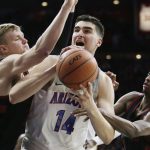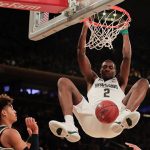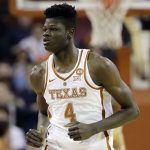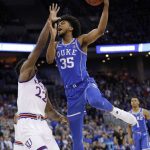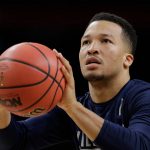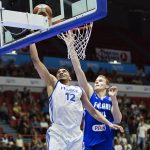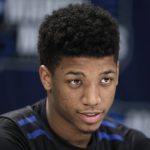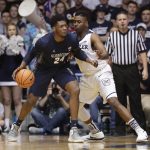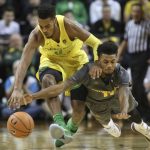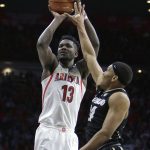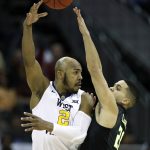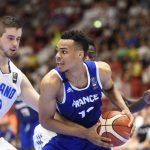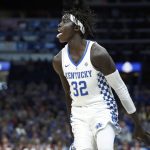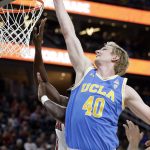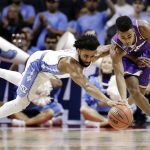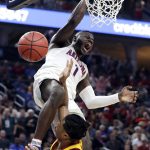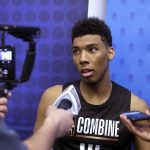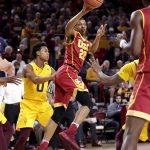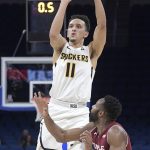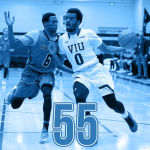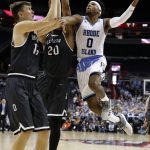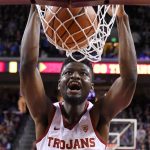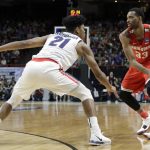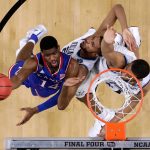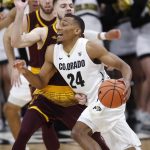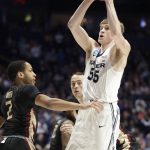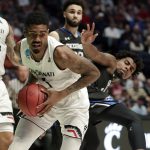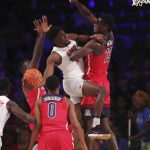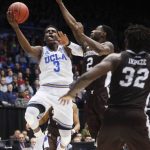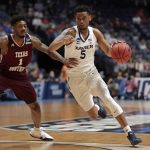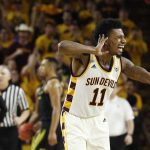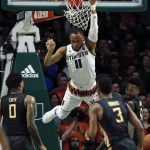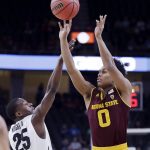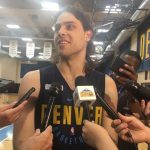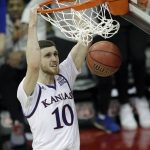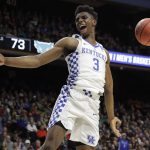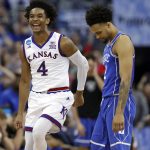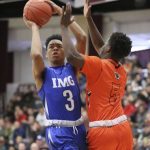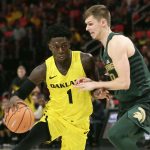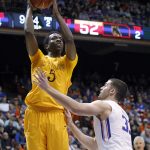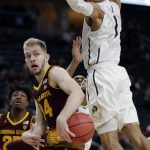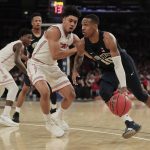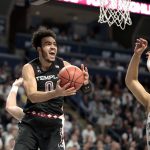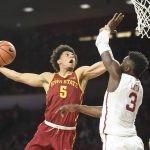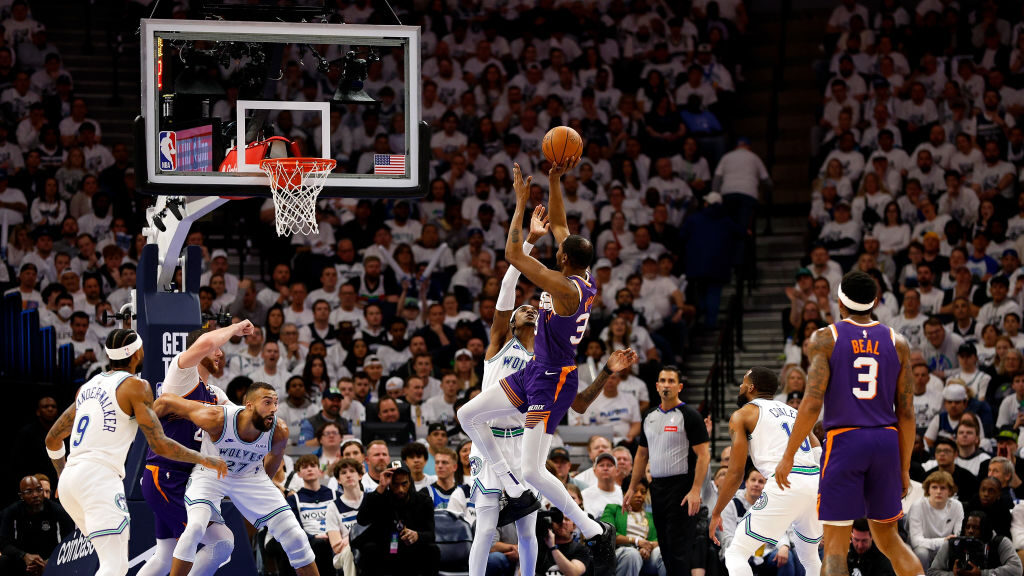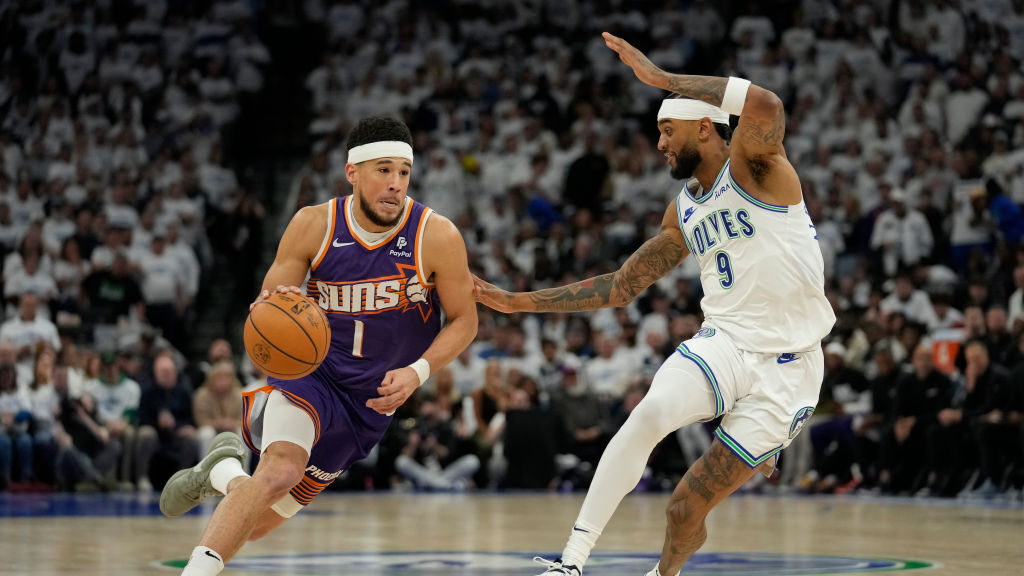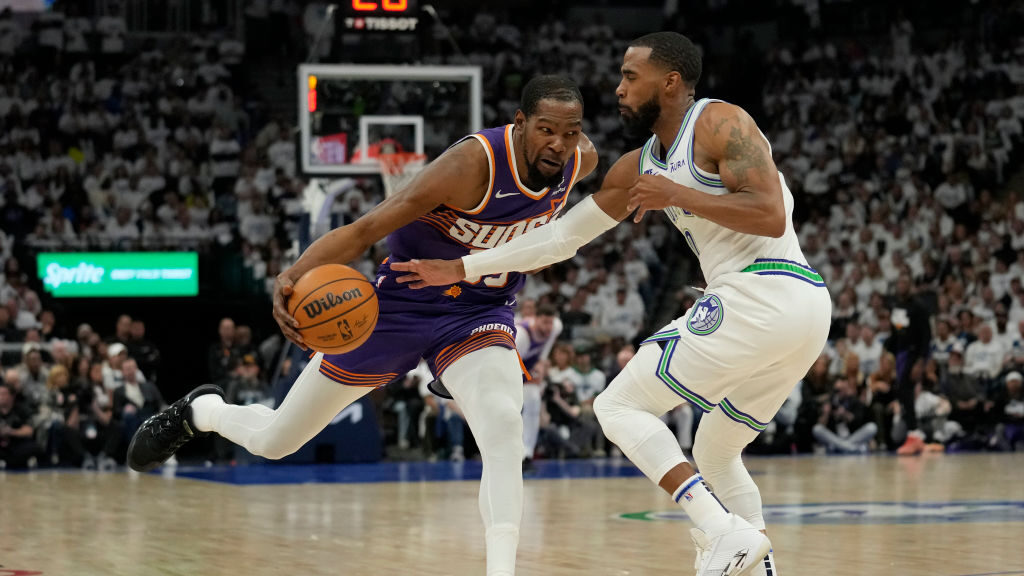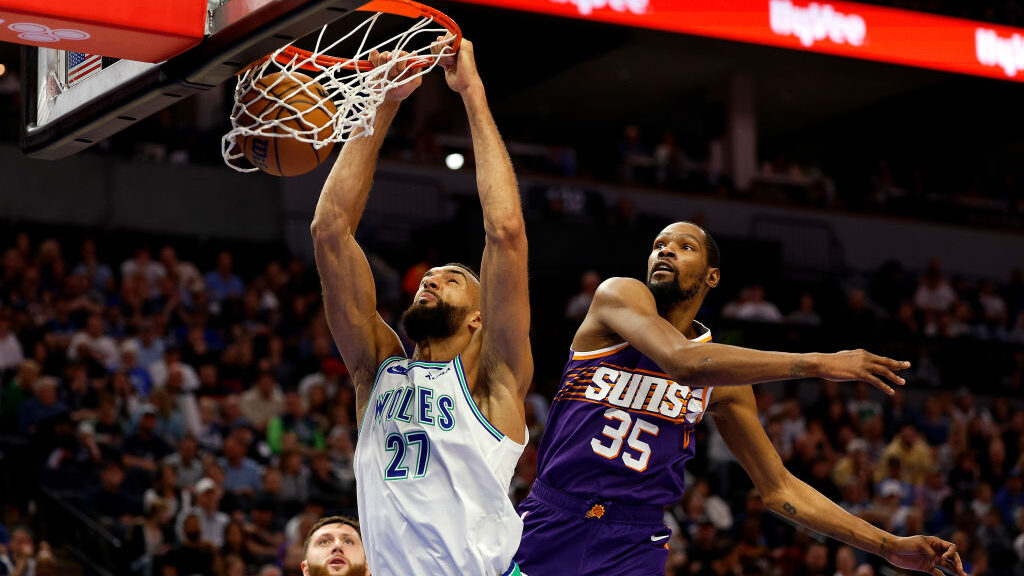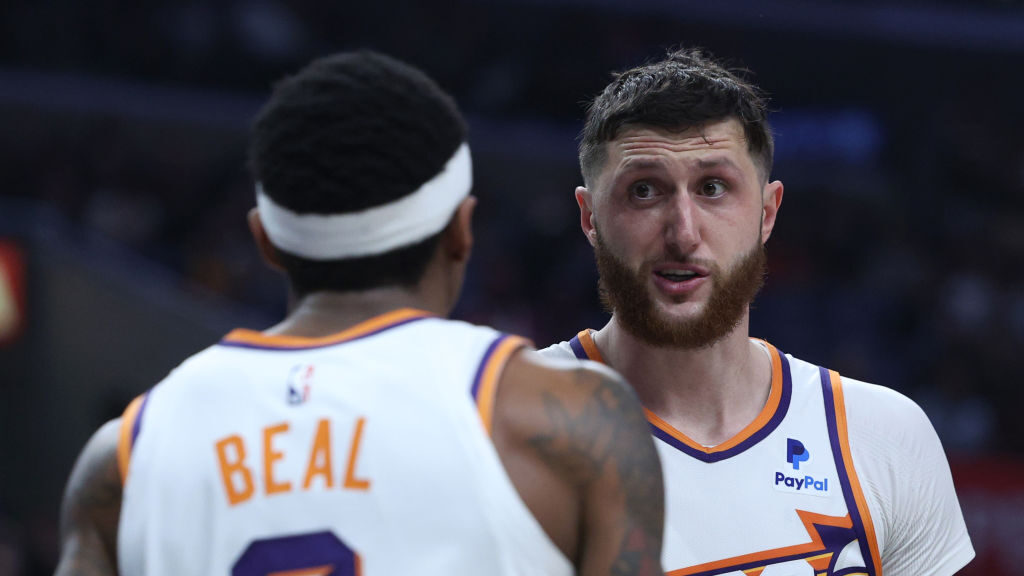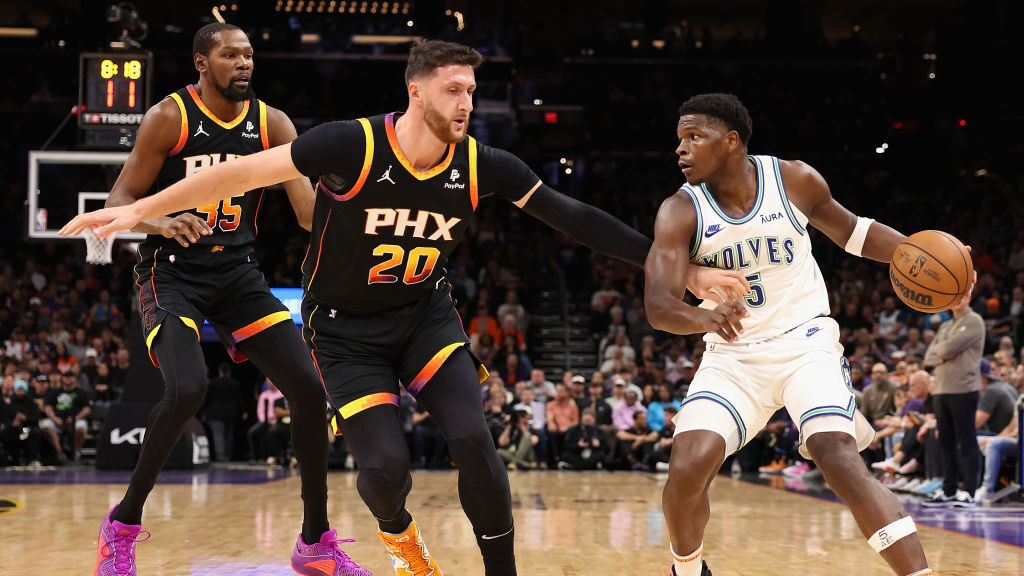Deandre Ayton’s tantalizing upside, high floor could top Suns’ board
Jun 5, 2018, 7:17 AM | Updated: 1:59 pm
Empire of the Suns has covered the strengths and weaknesses of potential top selections Deandre Ayton and Luka Doncic. After breaking down the pros and cons of their games, we now look at potential outcomes for the two, specifically their floors and ceilings as prospects in relation to the Suns’ decision with the No. 1 overall pick.
Deandre Ayton has his strengths and weaknesses as a prospect, but there’s no doubt about his high floor and even higher ceiling. That’s why he sits atop many NBA Draft boards and is the likely No. 1 overall pick by the Phoenix Suns.
Physical profile
Let’s not spend much time on how much a bear mixed with a cheetah this dude is physically and just watch the dunks at the beginning and end of this highlight video against Oregon.
28 PTS, 18 REBS (11-for-15) and 4 BLK for Deandre Ayton vs an undersized Oregon team. Chin-ups on the rim and touch from the perimeter. Ayton now averaging 24.0 PTS and 13.4 REBS per 40 with a 66.0 true shooting %. https://t.co/4p8Rr4Dh3f pic.twitter.com/WXxVQfnPQP
— Mike Schmitz (@Mike_Schmitz) February 26, 2018
Offensive comparisons
While I have small concerns about some of his offense, Ayton’s unquestionable offensive upside is already present even if he doesn’t become a technically fluid and advanced post scorer, or overwhelming physical presence.
Statistically, Ayton fits the profile of past top center prospects. Here are his per-40 minutes numbers compared to the four last big men to go No. 1 overall in the NBA Draft.
Greg Oden: 21.7 PPG, 13.2 RPG, 4.5 BPG, 62.6 true shooting % (takes into account three-point and free throw value)
Blake Griffin: 27.3 PPG, 17.3 RPG, 1.4 BPG, 64.8 true shooting %
Anthony Davis: 17.7 PPG, 13.0 RPG, 5.8 BPG, 65.4 true shooting %
Karl-Anthony Towns: 19.5 PPG, 12.7 RPG, 4.3 BPG, 62.7 true shooting %
Deandre Ayton: 24.0 PPG, 13.8 RPG, 2.3 BPG, 65.0 true shooting %
Outside of the block numbers, that’s top, top stuff out of Ayton production-wise.
The phrase “he can get 20 and 10 out of bed!” has some sarcastic influences but could ring true for such a physically imposing player. But in the past five seasons, only seven NBA big men have averaged 20 points and 10 rebounds a game: LaMarcus Aldridge, DeMarcus Cousins, Davis, Joel Embiid, Al Jefferson, Kevin Love and Towns. Cousins, Davis, Embiid and Towns were the four to do it this season and all four of their teams were in the playoffs.
If you are one of the many who believes Ayton is the type of talent who can do this pretty early in the NBA, he will be 21 years old at the start of his second season. If he were to pull off those averages in that season or his rookie year, he would be one of only seven bigs to do it by that age since 1980. Davis, Towns, Blake Griffin, Elton Brand, Tim Duncan, Antoine Walker and Shaquille O’Neal are those big men.
That might feel like crazy-high expectations, but it’s a challenge to not wind up there when Ayton joined Marvin Bagley III and Michael Beasley as one of three freshmen since the 1992-93 college basketball season to average 20 points and 10 rebounds on a true shooting percentage of at least 60.
Something you might notice about those names is how many of them have a knockdown midrange jumper and Ayton has that more than any of those other bigs out of college.
Ayton shot a ridiculous 50.9 percent in the long-midrange area on an even more absurd 108 attempts, per The Stepien’s shot charts. For a comparison this year, Bagley, Mohamed Bamba, Wendell Carter Jr. and Jaren Jackson Jr. took 72 combined attempts in that range and made 32 percent of them, with Jackson’s 4-of-9 the only individual number checking in above 40 percent.
If that’s not a knockdown shot for Ayton, I don’t know what is.
Defensive tools
Although I have my concerns defensively, let’s start with the perimeter and off-ball side to get excited.
Watch Ayton get lost triple-teaming, but then help in the post, get back to his man, deny the baseline with help and then perform a strong closeout on a corner three.
Not the most crisp-looking, but the tools are absolutely there.
On the ball is where Ayton looks the most likely to be special, and when we talk about how important ball screens are in today’s NBA in relation to fellow potential top pick Luka Doncic’s ball-handler value, let’s not forget Ayton defensively in that regard.
Even against NBA-sized guards, if Ayton is cutting off this space consistently, how do you even get by him without the threat of a blocked shot or see over him to make a pass?
Even with that mobility, teams will try and attack his rotations back toward the rim, like Arizona’s NCAA Tournament loss to Buffalo, in which he struggled throughout.
Around the rim, that’s where the alarms went off. Have a look yourself and find a block where he wasn’t guarding the man and he defended the shot in a helping manner under the rim. It rarely happened. Here’s a highlight video from March that has 22 blocks and all of them are him defending on the ball.
This is where we get to his fit in Tucson.
As far as his defensive instincts being Ayton’s primary weakness, Suns general manager Ryan McDonough responded to that notion on the team’s first day of pre-draft workouts.
“Yeah, he’s a terrific athlete. I think schematically a lot of it was schematically. They had him playing they had him playing the 4 a lot with Ristic, so he was guarding away from the basket on the perimeter,” McDonough said. “In the NBA, obviously he’s a center. He slides well. He moves his feet well. He’s a tremendous athlete at that size in terms of strength, fluidity, coordination, all of that.
“What I’ve seen on film and in-person so far, a lot of it is just experience. I think knowing defensive rotations, when to switch, when to rotate — that just comes with time. He has a high-level feel for the game, especially on the offensive end of the court. And from my experience, guys who have it on that end of the floor usually, in time, are able to translate that to the defensive end of the floor as well.”
NBA transition
Ayton’s head coach at Arizona Sean Miller made a very sound point regarding Ayton at his offseason press conference.
“The NBA game is suited even better for him because in college I would say 70 percent of the defense he saw involved the zone,” Miller said.
What McDonough and Miller say about Ayton’s situation with the Wildcats is the biggest x-factor in his NBA transition. The swing in those situations is what makes people like me, who don’t have him as the No. 1 player in this class, queasy about projecting him.
As a full-time center, would we have seen more natural rim protection instincts around the basket? How about more space for rim runs and post touches on the other end?
Conclusion
We didn’t navigate Ayton’s rebounding because we haven’t touched on his floor yet. Even if his tendencies for not boxing out are somewhat present in the NBA, he’s still going to be a very good rebounder, maybe even great. Ditto for his passing.
In summation, as a floor, we have a good post scorer with a money midrange jumper and great passing feel. Ayton will give you numbers on the glass and is a top-level switch-and-slide defender, a physically impressive thing for a bulky center. Maybe his instincts never click, but his numbers will at least always be there.
With his ceiling, Ayton could be a great post scorer that demands double teams, provides a consistent three-point shot and some options off the dribble. Add an edge inside that someone like assistant coach Corliss Williamson could help with and Ayton becomes a dominant league-leading rebounder, good rim protector and frightening perimeter defender.

